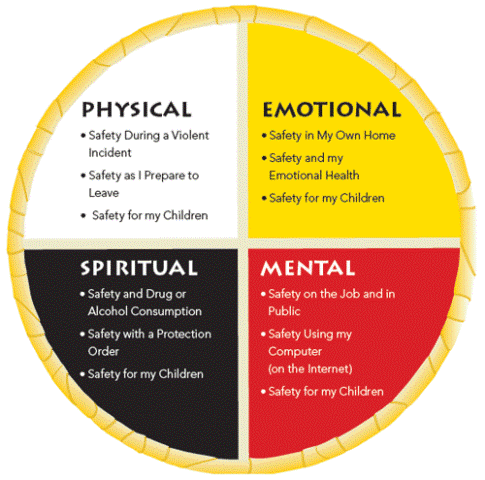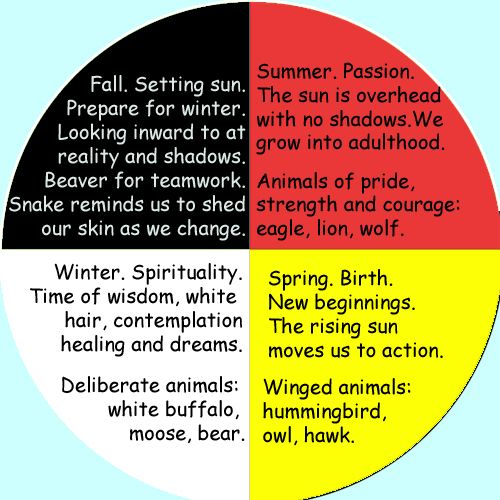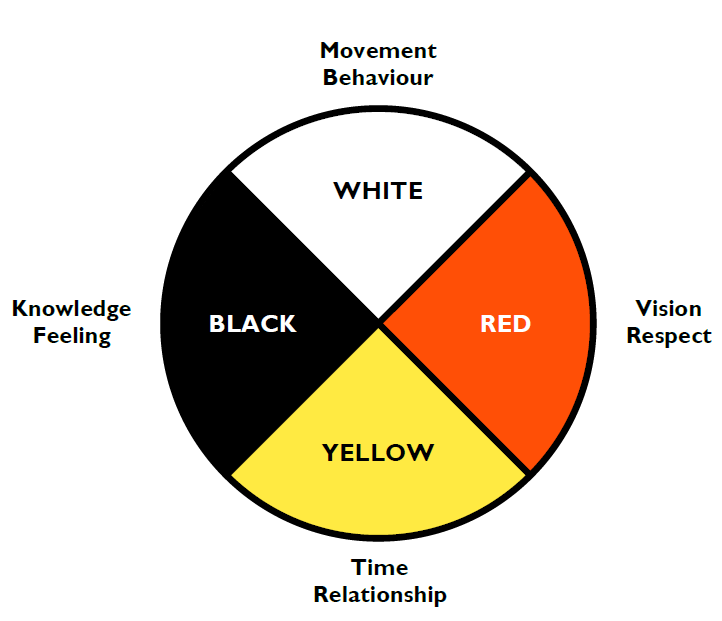The Medicine Wheel, sometimes known as the Sacred Hoop, has been used by generations of various Native American tribes for health and healing. It embodies the Four Directions, as well as Father Sky, Mother Earth, and Spirit Tree—all of which symbolize dimensions of health and the cycles of life.
The Medicine Wheel reminds us that we need to balance all four aspects of our being – the spiritual, emotional, physical and mental aspects. When we become out of balance, we experience disease.
The four colours (black, white, yellow, red) signify Earth’s boundary and all the knowledge of the universe, and they represent and embody concepts such as the Four Directions, four seasons, and sacred path of both the sun and human beings.
What does the number 4 mean to Native American healing?
The number four is sacred to many Native American tribes as it represents the four seasons, the four human needs – physical, mental, emotional and spiritual, the four kingdoms – animal, mineral, plant, and human; the four sacred medicines — sweetgrass, tobacco, cedar, and sage.
 The circle shape represents the interconnectivity of all aspects of one’s being, including the connection with the natural world. Medicine wheels are frequently believed to be the circle of awareness of the individual self; the circle of knowledge that provides the power we each have over our own lives.
The circle shape represents the interconnectivity of all aspects of one’s being, including the connection with the natural world. Medicine wheels are frequently believed to be the circle of awareness of the individual self; the circle of knowledge that provides the power we each have over our own lives.
The traditions give the guidance and support that is necessary for on-going healing and change. They convey a core understanding of a spiritual life. Without Spirit, and personal commitment, it is unlikely that any teaching or any strategy, from whichever direction, will help people attain and maintain balance. The Sacred Circle of the Medicine Wheel, and the Sacred Teachings, encapsulate all the spiritual wisdom required to guide the healing journey, sustain healing relationships, and promote positive change.
There are really seven directions associated with the Medicine Wheel – the four cardinal directions (north, south, east and west) as well as the sky, the earth and the centre. For Ojibwe people, the colours are yellow (east), red (south), black (west), white (north), father sky (blue), mother earth (green) and the self (Centre, purple). The medicine wheel reminds us that everything comes in fours – the four seasons, the four stages of life, the four races of humanity, four cardinal directions, etc.
One way to use the Medicine Wheel is as a self-assessment to determine how balanced one is. The Medicine Wheel reminds us that we need to balance all four aspects of our being – the spiritual, emotional, physical and mental aspects. When we become out of balance, we experience disease. In using the Medicine Wheel in this manner you might also explore what can be done to become re-balanced.
 Finding balance among the four quadrants of the Medicine Wheel is essential for a helper. How are we able to assist a person in need if we have not used the tool of self-reflection to evaluate where we are as helpers? We must look at all aspects of our lives and the relations we have to fully understand where we are on our journey. By looking at the emotional, mental, physical and spiritual aspects of our lives, we will then be able to see where we are unbalanced and be able to develop a plan of care to find that harmony to be better helpers.
Finding balance among the four quadrants of the Medicine Wheel is essential for a helper. How are we able to assist a person in need if we have not used the tool of self-reflection to evaluate where we are as helpers? We must look at all aspects of our lives and the relations we have to fully understand where we are on our journey. By looking at the emotional, mental, physical and spiritual aspects of our lives, we will then be able to see where we are unbalanced and be able to develop a plan of care to find that harmony to be better helpers.
Helpers who seek wise practices must seek their own healing. They need to be able to truly listen to their own heart before they can hear the heart of another. Training can be gained, but learning and healing is an on-going growth process. Helpers who are able to apply the lessons of the Medicine Wheel and the Seven Grandfather Teachings in their life will be able to develop wise practices in their work and learn the art of working from the heart.








